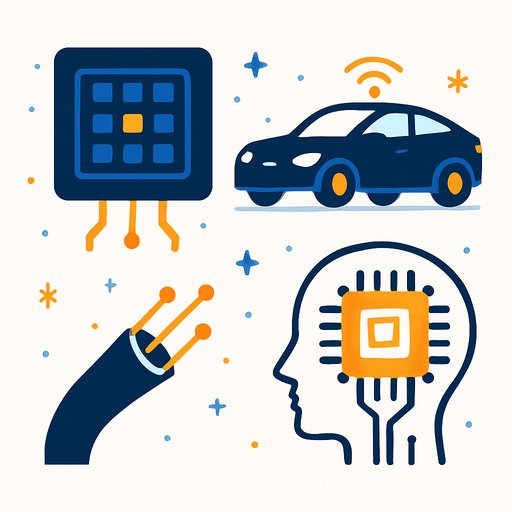Quantum-Scale Photosensing Chips Aimed at Fiber Networks, Autonomous Driving and Generative AI
A Brock University team led by Associate Professor of Chemistry Jianbo Gao is building photosensing devices-small chips based on nanostructured materials-to push performance in fiber optic communication, autonomous driving systems and GPUs that run generative AI workloads.
The focus: engineered semiconductor nanocrystals called quantum dots and related nanostructures made from gold, semiconductors and crystal lattices sized near a nanometre. At this scale, materials behave differently than their bulk counterparts, opening up new behaviors useful to photophysics, physical chemistry and electrical engineering.
Why quantum-sized materials matter
Quantum dots can generate single photons on demand, a capability needed for optical quantum communication and certain computing architectures. Their tunable optical properties also enable detection and emission across visible and infrared wavelengths, far beyond what standard sensors capture.
Gao's team is exploring these properties to create chips that see what humans can't, react in trillionths of a second, and operate with high detection efficiency in low-light conditions.
What the team is building
The researchers are using a state-of-the-art ultrafast laser to fabricate and test photosensing devices based on advanced nanostructured materials. These devices aim to integrate with:
- Optical quantum communication fibers for secure, long-distance links
- Autonomous driving stacks to improve night vision and fast scene understanding
- GPU-driven AI pipelines where infrared and low-light imaging expands data inputs and inference options
Why it matters for engineers and research teams
- Networking and security: Single-photon detection supports optical quantum communication with strong security properties over long distances.
- Perception systems: Vehicles could detect people, obstacles and structures at night with higher confidence, improving safety and reliability.
- AI and imaging: Infrared sensing can surface signals that are invisible to standard cameras, supporting more comprehensive medical imaging and new generative AI use cases.
Technical highlights
- Detection beyond human vision, including infrared
- Sensitivity to extremely weak light-even in near-complete darkness
- Fast response capturing dynamics in less than a trillionth of a second
- High detection efficiency and single-photon emission/detection paths
- Form factor suitable for integration into fiber systems, perception modules and data-center hardware
Building on earlier work introducing quantum dots into solar cells, Gao's group is translating fundamental photophysics into applied devices that slot into real infrastructure: fiber networks, perception stacks and AI-driven imaging pipelines.
Funding and commercialization
The project is supported by an Idea to Innovation (I2I) grant from the Natural Sciences and Engineering Research Council of Canada (NSERC), backing the path from discovery to industry-ready prototypes. Learn more about the program: NSERC I2I.
University leadership highlights the team's progress at the frontiers of quantum technologies, noting the potential for faster, more efficient systems across sectors. Local government support points to the broader economic and societal benefits of translating this research to Canadian industry.
Commercialization is being led by Brock LINC Innovation and Commercialization Manager Noshin Hashim, with efforts on intellectual property, market positioning and industry outreach. As Brock LINC Executive Director of Innovation, Commercialization and Entrepreneurship Farzana Crocco notes, I2I funding is accelerating the move from lab prototypes to industry validation.
What's next
Near term, the team is focused on device prototyping, performance validation and integration trials with fiber and vision systems. Industry partners interested in quantum communication, autonomous perception or AI-driven imaging stand to benefit from early collaboration.
If you're preparing teams for AI-driven imaging and sensor pipelines, you may find these training paths useful: AI courses by job role.
Key takeaway
By engineering photosensing chips at the quantum scale, Gao's team is building practical hardware that extends what networks, vehicles and AI systems can detect and process-especially in low light and infrared-while moving quickly toward industry deployment.
Your membership also unlocks:










